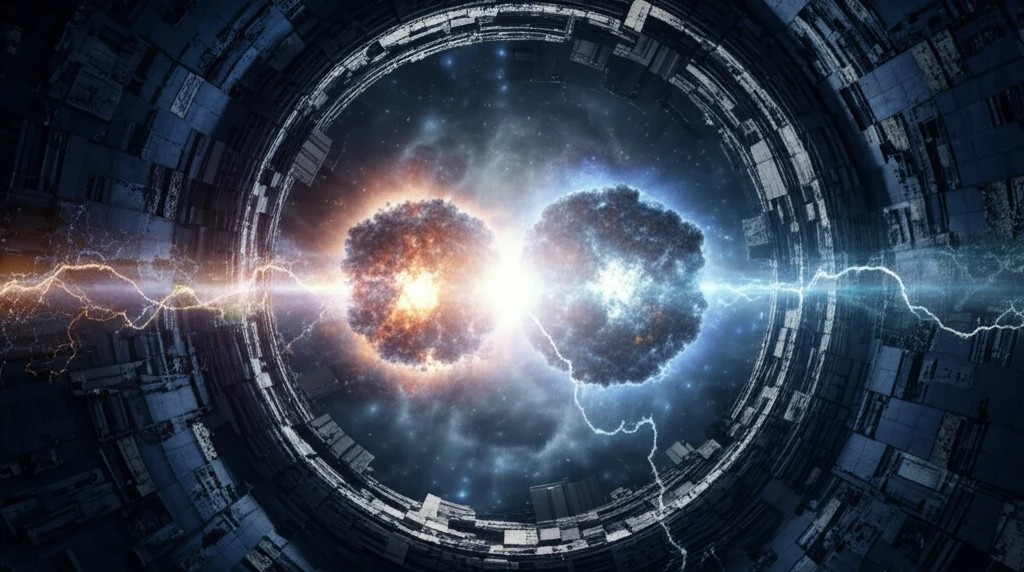
Unlocking the Secrets of Empty Space: How Heavy Ion Collisions Revolutionize Our Understanding of the Vacuum
"Explore how scientists use high-energy collisions to probe the quantum vacuum, revealing insights into particle physics and the fundamental nature of reality."
For nearly a century, the concept of a 'quantum vacuum' has intrigued physicists. Far from being empty, this vacuum teems with virtual particles constantly popping in and out of existence. But how can we study something so ephemeral? One answer lies in the awesome power of heavy ion collisions.
Imagine smashing atoms together at nearly the speed of light. These collisions, recreated in laboratories around the world, generate conditions of extreme energy density. For a fleeting moment, they allow us to peek into the hidden world of the quantum vacuum and test the very foundations of physics.
This article explores the fascinating history and future potential of using heavy ion collisions to understand the structure of the quantum vacuum, revealing how these experiments are pushing the boundaries of our knowledge.
The Quantum Vacuum: Not So Empty After All

The classical idea of a vacuum as simply empty space has been overturned by quantum mechanics. Instead, the quantum vacuum is understood as the lowest energy state of a quantum field, filled with temporary virtual particles and fields.
- Virtual Particles: These particles, like electron-positron pairs, constantly appear and disappear, contributing to the vacuum's energy density.
- Quantum Fields: The vacuum is not merely space but a dynamic interplay of quantum fields, each associated with a fundamental particle.
- Vacuum Energy: The quantum vacuum possesses an inherent energy, the source of much theoretical investigation and potential phenomena like the Casimir effect.
The Future of Vacuum Exploration
Heavy ion collision experiments are not just confirming existing theories; they are paving the way for new discoveries. As experiments become more sophisticated and powerful, scientists hope to address some of the biggest questions in physics, such as the nature of dark energy and the fundamental symmetries of the universe. Today there is a new interest in returning to the physics of QED of strong fields in a new experimental realm. In the focal point of very short pulse ultra intense lasers we approach if not today, then in the near future the critical fields condition. The ultra intense lasers just like the heavy-ion collisions draw their importance from the fact that they form the unique laboratory based testing ground for QED of strong fields. The non-perturbative pair-production process facilitates the exploration of the modified vacuum structure.
